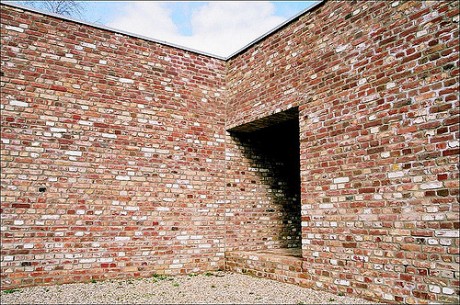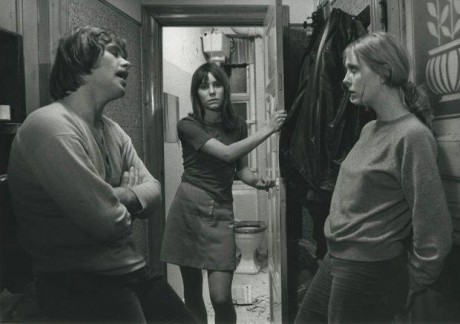


CAFx 2017 /The Destruction of Memory
TIM SLADE: THE DESTRUCTION OF MEMORY
Han er ekspert, en af filmens mange højtkvalificerede medvirkende, han fortæller om og siger sin mening om destruktionen af broen i Mostar som ikke var meningsløs, men helt præcis i sit formål, en vigtig del af et forsøg på at udføre et folkedrab så fuldstændigt som muligt, helt at fjerne et folks identitet. Tim Slades film erindrer mig om, at folkedrabet har tre former: fysisk, biologisk og kulturel, og den koncentrerer sig om det sidste, det kulturelle folkedrab, og her er betydningsbærende arkitektoniske værker så tydelige, og de holder nok derfor ofte først for. I The Jewish Street, 1992 trækker Herz Frank fra Riga denne gamle viden op: der var den russiske besættelse, så den tyske. Det lettiske flag blev fjernet overalt, instruktøren kommenterer i sin voiceover, jeg kan høre hans bløde alvorlige stemme konkludere: ”… som til alle tider begyndte de med templerne”, og jeg ser på hans billedside synagogerne brænde. Mostarbroen er genopbygget ser jeg på billedet, synagogen i Dresden blev genopført, det er vigtige dele af filmens indhold, og den hører i høj grad hjemme på arkitekturfestivalen, som handler om identitet.
Tim Slades film er ikke som Hertz’ filmkunst, Robert Bevan og han har aldrig haft den ambition. Cinematografisk er den også umulig, fotografiet er uegalt og oftest uskønt, klippet er uforståeligt. Arkivmaterialet anvendes uden samlet idé, især som tilfældige dækbilleder. Journalistisk er den for så vidt i orden, men den overalt relevante viden, resultatet af den omfattende viden er ikke særlig behændigt gjort tilgængeligt for mig. Imidlertid er The Destruction of Memory indholdsmæssigt enestående og også derfor overordentlig vigtig (findes der andre opdaterede og tilgængelige fremstillinger på dette ekspernivau?) og på den baggrund må jeg se bort fra filmkunst og elegant journalistik og gå i Grand 6. maj om formiddagen, lytte til DIIS forskeren Frederik Roséns introduktion og se den rystende og omfattende materialesamling i dens særdeles velmente uordentlighed. Og måske efter turen i biografen læse Robert Bevans bog og måske ved den får lidt mere styr på de mange indtryk.
Tim Slade: The Destruction of Memory, Australien / USA, 125 min. Vises i Grand Teatret, København, 6. maj 2017 09:30 under Copenhagen Architecture Festival www.cafx.dk
SYNOPSIS
Crumbled shells of mosques in Iraq, the fall of the World Trade Center towers on September 11: when architectural totems such as these are destroyed by conflicts and the ravages of war, more than mere buildings are at stake.
The Destruction of Memory—now available in this accessible, pocket edition—reveals the extent to which a nation weds itself to its landscape. Robert Bevan argues that such destruction not only shatters a nation’s culture and morale but is also a deliberate act of eradicating a culture’s memory and, ultimately, its existence. (Amazon)
LINKS / LITTERATUR
Robert Bevan: The destruction of Memory – Architecture at War, 2016
www.domusweb.it/en/reviews/2016/10/21/ (En engageret præsentation af filmens alvorligt vigtige indhold)
http://www.filmkommentaren.dk/blog/blogpost/2312/ (Om Herz Franks film)

